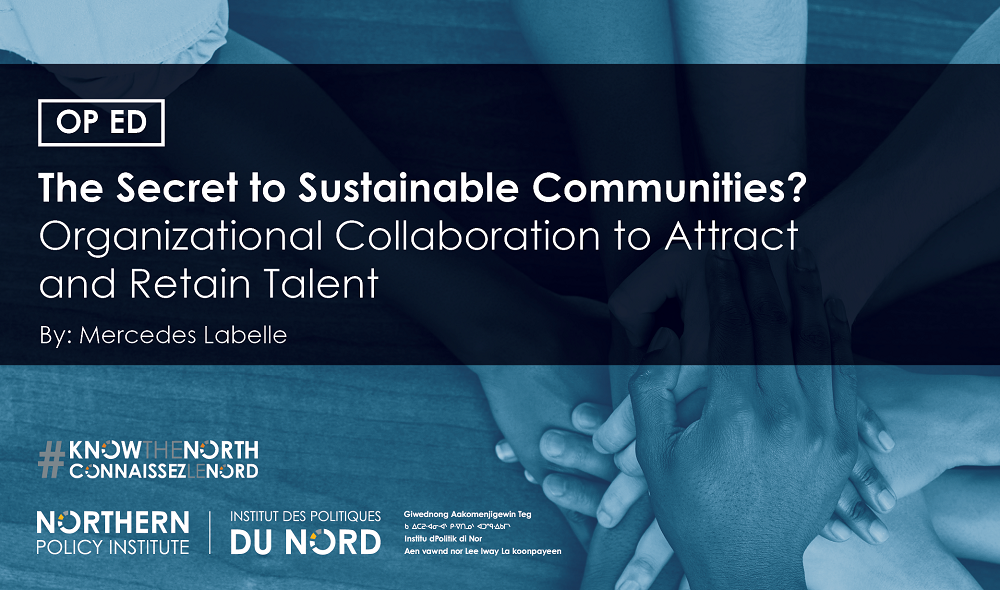The Secret to Sustainable Communities? Organizational Collaboration to Attract and Retain Talent
January 2023 - If you’ve been reading the news lately (or maybe you’re experiencing this first-hand), you’ll know that unemployment rates are low and businesses are facing difficulties hiring qualified employees. If you’re a job seeker, this is great news. If you’re an employer looking to hire more workers to keep up with demand, or fill gaps caused by former employees switching industries or retiring, the current situation is less than ideal.

The product of this good news/bad news situation? Businesses and organizations are stretched, capacity-wise, and might face difficulties maintaining service levels that match demand. This can result in decreased hours of operation, longer wait-times for materials, cost increases, and more. But, it might be a little easier to find a job than in pre-pandemic times.
In order to meaningfully address current issues and work towards attraction and retention of the population, we must understand the full scope of what organizations are experiencing. The work being done now has the potential to positively impact generations in the years to come; but it must be data-driven. As such, Northern Policy Institute surveyed employers and service-providing organizations to gather information on capacity, hiring, human resources, and willingness for collaboration.
Realistically, labour shortages are going to continue to increase as our workforce in Northern Ontario retires, especially given our low birth rates and levels of youth out-migration. Following current trends, communities will become economically unsustainable in the years to come. But, hope is not lost. Two ways to mitigate labour shortages include increasing immigration to our communities, as well as ensuring everyone already here is fully participating in the labour market.
In general, it was found that employers in the five largest cities in Northern Ontario– North Bay, Sudbury, Sault Ste. Marie, Timmins, and Thunder Bay - have positive attitudes towards hiring newcomers and diverse groups. Though, employers might face obstacles doing so, as respondents noted navigating the immigration process was difficult.
For example, approximately half of employers indicated that newcomers have already become an increasingly important source of new hires or will be in the near future. As these five cities also participate in the Rural and Northern Immigration Pilot – a community-driven economic immigration steam meant to help address labour shortages – more support with the navigation of these immigration streams could be beneficial in removing barriers to hiring newcomers.
Now, according to the survey of service providers in the five largest cities, there are a variety of programs services to help with the integration and retention of newcomers, and to promote community acceptance and welcoming of newcomers and diverse groups. Meaning, one of the challenges with this process could have to do with the communication of the availability of these services and removing barriers to accessing them. In fact, most of the organizations that responded to the survey worked with, to some extent, their community’s RNIP program, though a smaller subset of respondents actively participated in the initiative.
With the Rural and Northern Immigration Pilot now extended to the smaller communities surrounding North Bay, Timmins, Sudbury, and Thunder Bay, along with its increased duration, there is still time to meaningfully improve on this process. An average of 125 new immigrants, per year, can come to each community through this program. What’s more, they can bring their children and spouses.
As such, every effort must be made to ease this process for communities, employers, and newcomers themselves – and everyone has a role to play in this process. Many of the Northern Ontario RNIP communities, for example, host frequent employer information sessions on how to navigate the immigration stream. However, there is still room to simply the process of foreign credential recognition, implementation of cultural competency training in the workplace, build on and develop the labour force already existing in our communities, and increase collaboration and communication to increase capacity among organizations.
What does this all mean for the future of our Northern communities? We now have another pathway that can continue to bring immigrants to Northern Ontario to help mitigate labour shortages, and it just expanded to bring the benefits of immigration to smaller communities outside the Big 5. Now, we must continue to ensure employers and service providers have the knowledge and capacity they need to capitalize on this opportunity by not only bringing newcomers to the regions, but making them want to stay.
Mercedes Labelle is a Senior Policy Analyst at NPI.
Write for us
The content of Northern Policy Institute’s blog is for general information and use. The views expressed in this blog are those of the author and do not necessarily reflect the opinions of Northern Policy Institute, its Board of Directors or its supporters. The authors take full responsibility for the accuracy and completeness of their respective blog posts. Northern Policy Institute will not be liable for any errors or omissions in this information, nor will Northern Policy Institute be liable for any detriment caused from the display or use of this information. Any links to other websites do not imply endorsement, nor is Northern Policy Institute responsible for the content of the linked websites.
Northern Policy Institute welcomes your feedback and comments. Please keep comments to under 500 words. Any submission that uses profane, derogatory, hateful, or threatening language will not be posted. Please keep your comments on topic and relevant to the subject matter presented in the blog. If you are presenting a rebuttal or counter-argument, please provide your evidence and sources. Northern Policy Institute reserves the right to deny any comments or feedback submitted to www.northernpolicy.ca that do not adhere to these guidelines.
